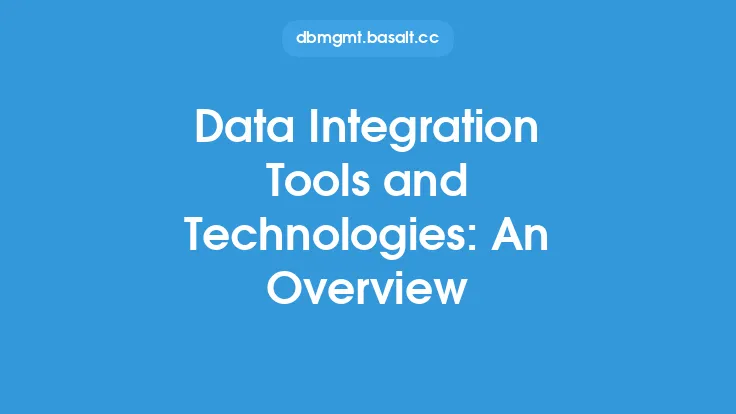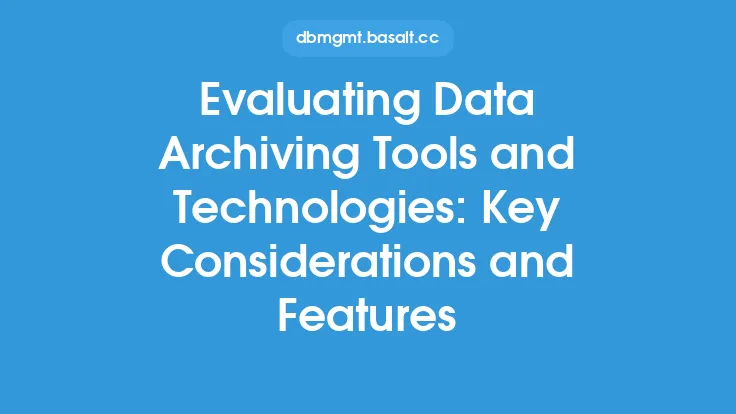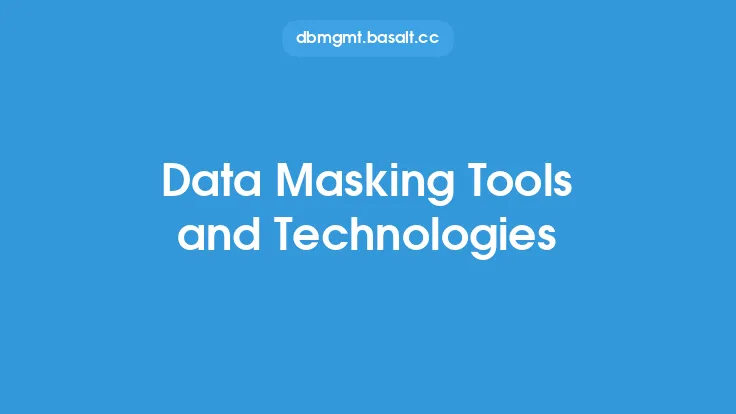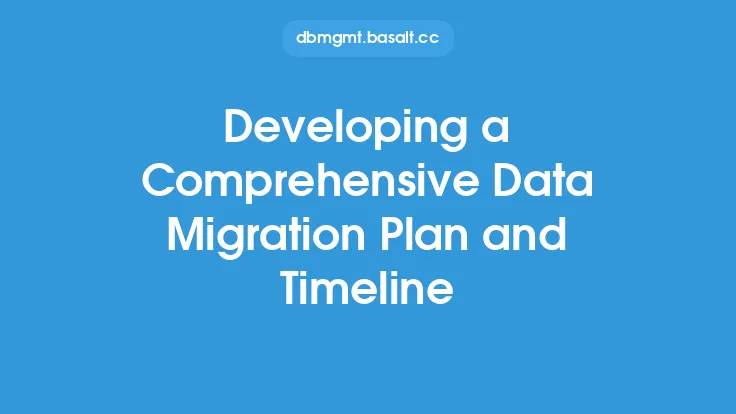Data migration is a complex process that involves transferring data from one system, format, or storage device to another. It is a critical aspect of database implementation, as it enables organizations to upgrade their systems, switch to new technologies, or consolidate data from multiple sources. To facilitate this process, various data migration tools and technologies have been developed. These tools and technologies play a crucial role in ensuring that data is transferred accurately, efficiently, and securely.
Introduction to Data Migration Tools
Data migration tools are software applications designed to automate the process of transferring data from one system to another. These tools can be categorized into several types, including data transformation tools, data mapping tools, and data validation tools. Data transformation tools are used to convert data from one format to another, while data mapping tools are used to create a mapping between the source and target systems. Data validation tools, on the other hand, are used to verify the accuracy and consistency of the data being transferred.
Some popular data migration tools include Oracle Data Integrator, Microsoft SQL Server Integration Services, and Informatica PowerCenter. These tools offer a range of features, such as data transformation, data mapping, and data validation, to support the data migration process. They also provide a user-friendly interface that allows users to design, execute, and monitor data migration workflows.
Data Migration Technologies
Data migration technologies refer to the underlying technologies that enable data migration. These technologies include data exchange formats, data transfer protocols, and data storage systems. Data exchange formats, such as CSV, XML, and JSON, are used to represent data in a format that can be easily transferred between systems. Data transfer protocols, such as FTP, SFTP, and HTTP, are used to transfer data over a network.
Data storage systems, such as relational databases, NoSQL databases, and cloud storage systems, are used to store and manage data. These systems provide a range of features, such as data compression, data encryption, and data replication, to support the data migration process. They also offer a range of data models, such as relational, document-oriented, and graph-oriented, to support different types of data.
Cloud-Based Data Migration
Cloud-based data migration refers to the process of migrating data to or from a cloud-based system. This approach offers several benefits, including scalability, flexibility, and cost-effectiveness. Cloud-based data migration tools, such as Amazon Web Services (AWS) Database Migration Service and Google Cloud Data Transfer, provide a range of features, such as data transformation, data mapping, and data validation, to support the data migration process.
Cloud-based data storage systems, such as Amazon S3, Google Cloud Storage, and Microsoft Azure Blob Storage, provide a range of features, such as data compression, data encryption, and data replication, to support the data migration process. They also offer a range of data models, such as relational, document-oriented, and graph-oriented, to support different types of data.
Open-Source Data Migration Tools
Open-source data migration tools are software applications that are freely available and can be modified and distributed by users. These tools offer several benefits, including cost-effectiveness, flexibility, and customizability. Some popular open-source data migration tools include Apache NiFi, Talend, and Pentaho.
Apache NiFi is a data integration tool that provides a range of features, such as data transformation, data mapping, and data validation, to support the data migration process. Talend is a data integration platform that provides a range of features, such as data transformation, data mapping, and data validation, to support the data migration process. Pentaho is a business intelligence platform that provides a range of features, such as data integration, data analytics, and data visualization, to support the data migration process.
Data Migration Security
Data migration security refers to the measures taken to protect data during the migration process. This includes encrypting data, authenticating users, and authorizing access to data. Data encryption tools, such as SSL/TLS and PGP, are used to protect data in transit and at rest. User authentication tools, such as username/password and Kerberos, are used to verify the identity of users.
Access control tools, such as role-based access control and attribute-based access control, are used to authorize access to data. These tools provide a range of features, such as data masking, data encryption, and data access logging, to support the data migration process. They also offer a range of compliance features, such as HIPAA, PCI-DSS, and GDPR, to support regulatory requirements.
Data Migration Best Practices
Data migration best practices refer to the guidelines and recommendations that are followed to ensure a successful data migration. These best practices include planning, testing, and validating data migration workflows. Planning involves identifying the source and target systems, defining the data migration requirements, and creating a data migration plan.
Testing involves verifying the accuracy and consistency of the data being transferred, while validation involves verifying the completeness and correctness of the data migration process. Data migration workflows should be designed to handle errors and exceptions, and should provide a range of features, such as data logging, data monitoring, and data reporting, to support the data migration process.
Conclusion
In conclusion, data migration tools and technologies play a critical role in facilitating the transfer of data from one system to another. These tools and technologies offer a range of features, such as data transformation, data mapping, and data validation, to support the data migration process. They also provide a range of benefits, including scalability, flexibility, and cost-effectiveness.
By understanding the different types of data migration tools and technologies, organizations can make informed decisions about which tools and technologies to use for their data migration needs. Additionally, by following best practices and taking measures to ensure data migration security, organizations can ensure a successful data migration that meets their business requirements.





